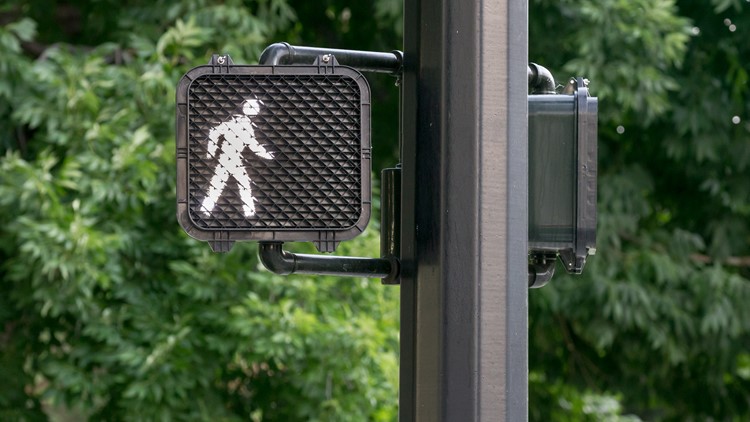HOUMA, La. — Local roadways are not getting any safer for pedestrians, according to a recently released national study.
The report, conducted by a nonpartisan advocacy group, ranks Louisiana as the fourth most dangerous state in the nation for walkers.
Using a “Pedestrian Danger Index” that measures the number of people struck and killed while walking, the study ranks the Houma-Thibodaux area as the second most dangerous metro area in the state behind Monroe.
Between 2008 and 2017, motorists struck and killed 1,047 pedestrians in Louisiana, according to the report. Pedestrian deaths in Louisiana jumped by 3.7 percent over the last decade.
Over the past 10 years, the number of people struck and killed while walking increased by 35.4 percent nationwide, the study says.
The “Dangerous by Design” report was created by Smart Growth America, which is a nonpartisan advocacy group that examines how dangerous road designs can lead to pedestrian deaths.
The report links the increased number of fatalities to roads that are not designed safely for walking traffic.
“When we design streets to move cars as quickly as possible instead of prioritizing the safety of all people, the consequences can be deadly, especially for people walking,” the study reads. “Louisiana still has a long way to go to better protect the safety of all people who use the street, especially the most vulnerable users.”
The study’s findings come after a 62-year-old pedestrian was killed earlier this year while pushing a grocery cart on Martin Luther King Jr. Boulevard in Houma.
The crash claimed the life of Houma resident Jack Basting. According to State Police, Basting was crossing Martin Luther King Boulevard’s left southbound lane and was hit by a southbound 2015 Toyota Corolla.
He was then stuck a second time by a 2014 Honda Accord traveling behind the Corolla, authorities said. He was transported to Terrebonne General Medical Center, where he died from his injuries.
Cassie Parker, South Central Planning and Development Commission regional transportation safety coordinator, said Louisiana’s pedestrian problem isn’t unique.
If fact, the study found that between 2008 and 2017, drivers struck and killed 49,340 pedestrians across the country, which is more than 13 people per day or a jumbo jet filled with passengers that crashes every month.
“Unfortunately, it sadly reflects the truth,” Parker said. “The number of pedestrians being killed by motor vehicle crashes is growing. This study is bringing attention to this national and statewide epidemic that’s taking place.”
Stephanie Brüning, South Central Planning and Development Commission regional planner, said local pedestrian deaths have two things in common: the time of day and the type of roadway.
“When crashes occur we are seeing 60 percent of these fatalities are taking place on two-way undivided roads,” Brüning said. “Also, about 80 percent of them occur between dusk and daylight. Those are the top two things we are seeing.”
Pedestrian fatalities in Louisiana have increased by 40.2 percent from 2017 to 2018, according to South Central Planning and Development data. Over the last five years, there was an increase of 69.1 percent for pedestrian fatalities and an 11.8-percent jump in pedestrian injuries.
Bicyclists are also vulnerable to road hazards, Brüning said. Bicycle-related fatalities have risen by 26 percent from 2017 to 2018 and alcohol-involved bicyclists’ deaths have increased by 18 percent.
Scott Banville is a Nicholls State University English professor and avid bicyclist who rides about two to three times a week. Although he said he feels fairly safe, he knows a lot of people who have stopped bicycling because of dangerous road conditions.
“I think one thing that could make cycling safer is if everyone realized that cyclists are their neighbors, their co-workers, etc.,” Banville said. “Giving us three feet and 30 seconds won’t cost you anything, but not doing so might cost us our lives.”
Over the last five years, bicycle fatalities have increased by 123 percent, according to the Center for Analytics and Research in Transportation Safety. Alcohol-related bicycle deaths have risen by a whopping 225 percent.
Several measures are being taken to make local roads safer for both pedestrians and bicyclists, Brüning said.
Working with the Metropolitan Planning Organization, South Central is crafting a three-year bicycle and pedestrian safety regional plan.
“We also completed a survey in which over 1,000 people took,” Brüning said. “They directly talked about their bicycle and walking habits and addressed any other safety concerns they have. We also go after grants to assist our parishes where needed.”
Although safety officials are taking measures to reduce pedestrian fatalities, everyone in the community needs to do their part as well, Parker said.
“We’re trying to educate not only pedestrians but also drivers that the roads are for all users,” Parker said. “Pedestrians and bicyclists have just as much right to use that road as anyone in a vehicle.”
Pedestrians should try to be visible at all times and wear bright clothing or reflective material, Parker said.
“Never assume that a driver sees you,” Brüning added. “Make eye contact with the driver. If they don’t make eye contact they don’t see you. People get distracted very easily these days.”
Like motorists, pedestrians should also avoid alcohol and drugs when walking because they can impair judgment and delay reaction times, Parker said.
“If people could follow the law, pay attention and be aware, I think we could avoid the majority of these crashes,” Parker said. “A lot of this is preventable.”
-- Houma Today Staff Writer Dan Copp can be reached at 448-7639 or at dan.copp@houmatoday.com. Follow him on Twitter @DanVCopp.
► Get breaking news from your neighborhood delivered directly to you by downloading the new FREE WWL-TV News app now in the IOS App Store or Google Play.




